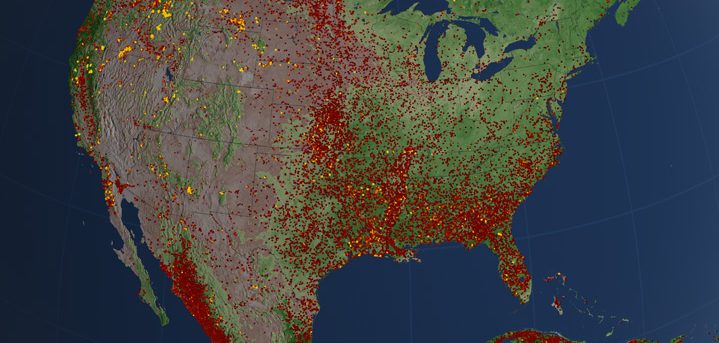According to NOAA, the advancement of AI technologies has been instrumental in the development of a cloud-based platform which can provide centralized early warning and dispatch for first responders and emergency managers combating high-impact events, such as wildfires.
Mayday.ai, brainchild of developer Kian Mirshahi, uses multiple resources, including satellites, traffic cameras and social media, to help keep first responders and the public informed. “We believe our platform can improve the flow of critical information between first responders and to the public, which traditionally has been impeded due to the fragmented nature of the disaster management communications,” Mirshahi explained. “At the same time, we believe our platform can directly involve people at the community level in order to build disaster resiliency.”
In 2016 and 2018, NOAA launched two new powerful geostationary satellites, GOES 16 and 17, which for the first time provided high-definition color imagery of the entire USA. At the same time, NOAA also kicked off a series of innovative Cooperative Research and Development Agreements with the major cloud service providers in the USA to provide easy access to NOAA data, especially GOES data.
These agreements have since transitioned to an operational activity known as the NOAA Big Data Program (BDP). The BDP provided the general public the ability to access and analyze near real-time data feeds from GOES and other sources, without the need for a satellite dish and a supercomputer. This low-cost access to near real-time data, together with the powerful computing resources and advanced AI technology available on the cloud service providers’ platforms, has opened the doors for small startups and innovators, such as Mirshahi, to leverage its capabilities.
The 2020 fire season has been unprecedented in California, Oregon and beyond, which has put Mirshahi’s concept quickly to the test and has provided multiple opportunities to evaluate and fine-tune his early-warning technology.
According to NOAA, Mayday.ai has been training its analysis engine using machine learning to see through partial clouds, which has enabled it to detect a high proportion of wildfire events up to 15 minutes after starting and well in advance of 911 calls reporting the incidents.
Mayday.ai has also enhanced its partial cloud detection technology to include lighting mapping every 10 minutes. This additional capability allowed Mayday.ai to quickly identify lightning-caused fires. This is particularly powerful in a year where records are being broken with dry lightning causing wildfires in areas with ongoing drought conditions.
“Today we are seeing wildfire events as early as four hours ahead of 911 calls, from 22,000 miles above sea level,” said Mirshahi. “Ultimately, we hope to work with all stakeholders locally, nationally and globally to prevent these events from causing so much damage to lives and livelihoods.”



